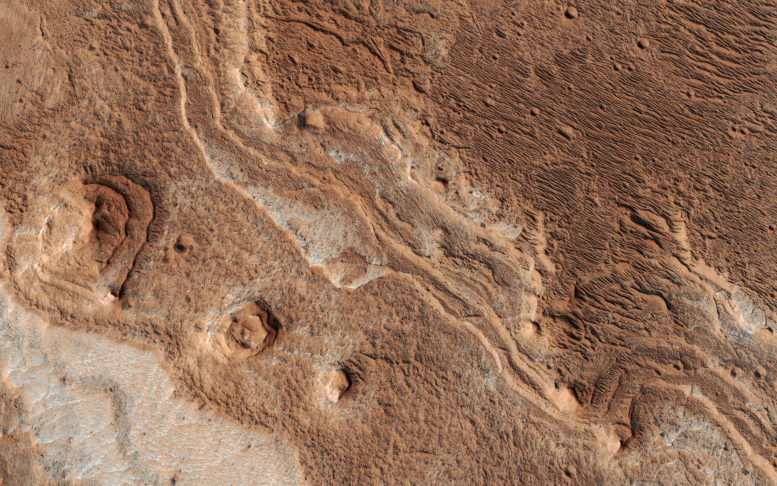
Mars Reconnaissance Orbiter has captured an image of eroded sedimentary layers in Shalbatana Valles, revealing small mesas and light-toned material with potentially different compositions. Credit: NASA/JPL-Caltech/University of Arizona
This new image from NASA’s Mars Reconnaissance Orbiter (MRO) shows layers, probably sedimentary in origin, that have undergone extensive erosion in Shalbatana Valles, a prominent channel that cuts through Xanthe Terra.
This erosion has produced several small mesas and exposed light-toned material that may differ in composition from the surrounding material.
The map is projected here at a scale of 25 centimeters (9.8 inches) per pixel. [The original image scale is 27.5 centimeters (10.8 inches) per pixel (with 1 x 1 binning); objects on the order of 82 centimeters (32.3 inches) across are resolved.] North is up.
The University of Arizona, Tucson, operates HiRISE, which was built by Ball Aerospace & Technologies Corp., Boulder, Colorado. NASA’s Jet Propulsion Laboratory, a division of Caltech in Pasadena, California, manages the Mars Reconnaissance Orbiter Project for NASA’s Science Mission Directorate, Washington.

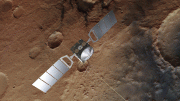
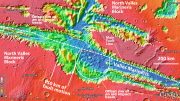

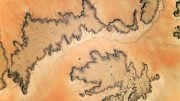
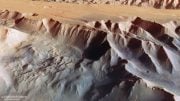

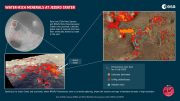
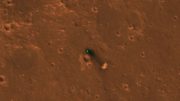
Be the first to comment on "New HiRISE Image of Mars Shows Eroded Layers in Shalbatana Valles"